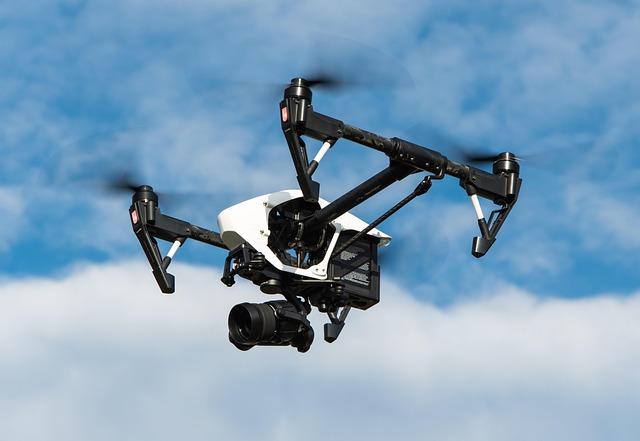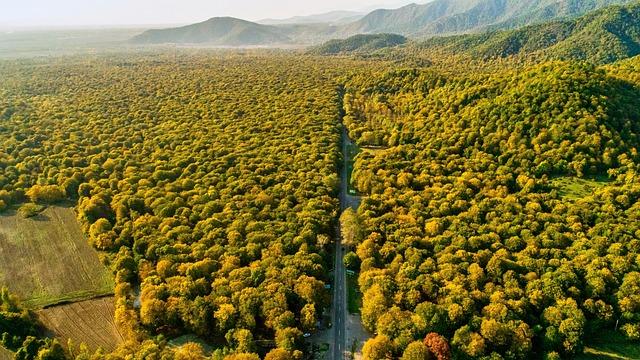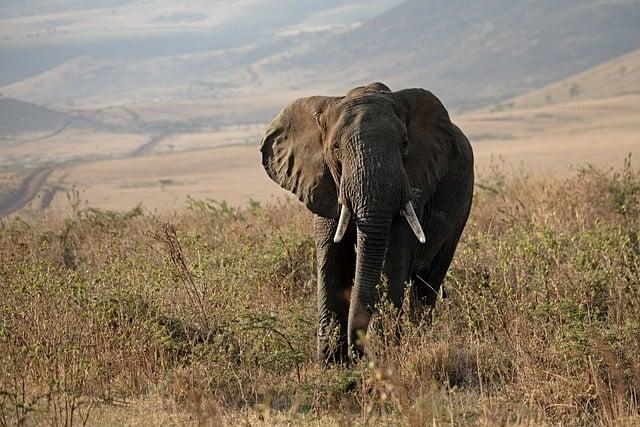Within the middle of Africa, the place numerous ecosystems teem with lifestyles, Burundi stands at a the most important crossroads in the fight for flora and fauna conservation. Going through demanding situations such as habitat loss,poaching,and local weather alternate,the country is leveraging cutting-edge technology to safeguard its wealthy biodiversity. Certainly one of the moast cutting edge answers rising on this effort is using drones, particularly designed for flora and fauna conservation. Those aerial gear are revolutionizing the best way conservationists observe animal populations, assess habitat prerequisites, and battle unlawful actions. On this article, we delve into how flora and fauna conservation drones are being applied in burundi, analyzing their have an effect on on conservation efforts and the way forward for the nation’s distinctive flora and fauna. Sign up for us as we discover the intersections of era, ecology, and sustainability in a country decided to offer protection to its herbal heritage.
Exploring the Position of Drones in Natural world Conservation Efforts in Burundi
In fresh years, the usage of drones has revolutionized flora and fauna conservation in Burundi, a country wealthy in biodiversity but dealing with vital environmental demanding situations. Those unmanned aerial automobiles (UAVs) are proving to be helpful for tracking flora and fauna populations, monitoring migratory patterns, and mapping habitats in real-time.conservationists are leveraging drones supplied with high-resolution cameras and thermal imaging era to behavior aerial surveys, providing a hen’s-eye view of ecosystems that may or else be onerous to evaluate.This era lets in for extra correct information assortment, which is important for developing efficient conservation methods and facilitating speedy reaction to rising threats akin to poaching and habitat destruction.
Additionally, the combination of drones into conservation efforts is fostering larger network engagement and consciousness.Native communities are being educated to function those units, thus empowering them to actively take part in protective their herbal heritage. Some great benefits of this manner come with:
- Greater Surveillance: Drones allow constant tracking of each flora and fauna and human actions,bettering regulation enforcement operations towards poaching.
- Price-Effectiveness: Using drones significantly reduces the prices related to floor patrols and manpower.
- Information-Pushed Choices: The details amassed is helping in making knowledgeable choices that undoubtedly have an effect on flora and fauna conservation insurance policies.
As an instance the have an effect on of drone era on conservation, the desk underneath summarizes key attributes and results seen in fresh initiatives:
| Challenge | Drone Kind | key Consequence |
|---|---|---|
| Lake Tanganyika Survey | Mounted-wing | Known essential fish breeding spaces |
| Burundi Nationwide Park Patrol | Quadcopter | Decreased poaching incidents through 30% |

Advantages of Drone Generation for Tracking Endangered Species
Drone era has revolutionized the best way conservationists observe endangered species,providing a myriad of benefits that commonplace strategies frequently fall quick of. One of probably the most vital advantages is the aptitude of drones to get entry to hard-to-reach spaces of the barren region with out hectic the flora and fauna.This ends up in extra correct information assortment on animal populations and habits, as drones can silently apply with out interference. As well as, the high-resolution imagery and real-time information transmission supplied through drones allow researchers to monitor motion patterns and habitat adjustments with remarkable precision. This era helps well timed interventions to offer protection to inclined species and informs policy-making choices aimed at conservation efforts.
Additionally, the deployment of drone era facilitates environment friendly useful resource control, permitting conservationists to cover vast areas in considerably much less time then conventional survey strategies. key benefits come with:
- Price-effectiveness: Decreased bills on manpower and go back and forth.
- Fast tests: Fast information amassing in reaction to pressing ecological threats.
- Non-invasive tracking: Minimum disturbance to flora and fauna all through observations.
This cutting edge manner now not handiest aids in safeguarding endangered species but additionally fosters broader network engagement in conservation projects, making it an very important software within the combat to maintain biodiversity in areas like Burundi.

Demanding situations Confronted in Imposing Drone Answers in Burundi’s Nationwide Parks
imposing drone era in Burundi’s nationwide parks comes with a novel set of demanding situations that obstruct efficient flora and fauna conservation efforts. Certainly one of the most vital boundaries is the restricted infrastructure in faraway spaces, the place drone operations require dependable charging stations and upkeep amenities.Steadily sufficient, the essential technological make stronger is missing, making it tough for conservation groups to deploy drones persistently. Moreover, the loss of coaching and abilities amongst native team of workers can obstruct a hit drone operations, as efficient use of this era calls for experience in each piloting and information research.
Any other main hurdle comes to regulatory constraints and the desire for complete insurance policies governing drone utilization in nationwide parks. With out transparent pointers,operators might face prison hindrances that limit the facility to make use of drones for surveillance or tracking. Moreover, network resistance generally is a vital problem, as native citizens might have considerations about privateness and land use. To make sure the a hit integration of drones into conservation methods, it’s the most important to interact stakeholders, teach communities, and foster collaboration between flora and fauna government and native populations. Addressing those challenges requires concerted efforts and cutting edge answers adapted to the original context of Burundi.

Case Research: A success Drone Tasks in Natural world Coverage
The use of drones in flora and fauna conservation has emerged as a transformative answer for safeguarding endangered species in Burundi. Those aerial units are supplied with high-resolution cameras and thermal imaging era, permitting conservationists to observe huge spaces of land temporarily and successfully. Due to drone era, groups can establish poaching actions and assess the well being of flora and fauna populations with remarkable accuracy. The information captured contributes to knowledgeable decision-making for park management and complements network engagement in conservation efforts.
A number of a hit drone projects have demonstrated the effectiveness of this manner in Burundi. Significantly, one initiative interested in monitoring the actions of the significantly endangered Jap Lowland gorilla. The deployment of drones has led to vital insights,together with:
- Actual-time tracking: Quick information on gorilla behaviors and habitat utilization.
- Enhanced anti-poaching efforts: Fast intervention features to discourage poachers.
- Group involvement: Coaching native citizens in drone operation, fostering a way of stewardship.
In addition, the collaboration between NGOs and native governments has created a framework for sustainable conservation practices facilitated through drone era. This joint effort now not handiest preserves biodiversity however additionally promotes eco-tourism,offering choice livelihood choices for native communities.

Suggestions for Bettering Drone Usage in Conservation Methods
To maximise the efficacy of drones in conservation efforts, integrating complicated era and collaborative frameworks is very important. Multi-spectral drones may give essential information on plants well being and biodiversity, helping within the identity of key habitats.Additionally, incorporating AI-powered analytics can toughen the translation of aerial information, enabling faster and extra correct tests. Collaborative partnerships with native communities and organizations also are essential; coaching native team of workers in drone operations and information research fosters possession and builds capability, making sure sustainable long-term good fortune.
Bettering conservation methods via drone era calls for a considerate manner to information control and dissemination. Common workshops and coaching classes will also be established to percentage findings and ways amongst stakeholders. Imagine creating a centralized database for drone-collected information this is available to researchers, conservationists, and policymakers, selling transparency and knowledgeable decision-making. A structured comments mechanism lets in for the adaptation of drone utilization in keeping with real-world packages and results. The desk underneath outlines possible projects to give a boost to drone usage in conservation:
| Initiative | Description |
|---|---|
| Coaching workshops | Equip native groups with drone operation and information research abilities. |
| Information Sharing Platforms | Create available assets for researchers and conservation teams. |
| Common Checks | Habits critiques to refine drone methods and ways. |
| Group Engagement | Contain native populations in drone projects for larger have an effect on. |

Long term Potentialities: Integrating Drones with Native Communities for Sustainable Conservation
As the combination of drones into flora and fauna conservation efforts expands, the possible for collaboration with native communities turns into more and more essential. Via harnessing aerial era,conservationists can facilitate data-driven choices and interact communities in tracking biodiversity. This partnership may lead to vital developments in sustainable practices that empower locals to take an lively position in holding their herbal assets. Efficient coaching techniques on drone operations can equip network individuals with treasured abilities, fostering a sense of possession and funding in the ecological well-being in their area.
Collaboration between drone operators and native stakeholders too can supply very important insights into the viability of conservation methods. The usage of drones for actions like flora and fauna monitoring, habitat review, and anti-poaching patrols may end up in higher useful resource allocation and extra fast responses to environmental threats. Native communities can give a contribution their wisdom of the terrain and flora and fauna behaviors, developing a richer, extra nuanced figuring out of the ecosystems thay inhabit. With ongoing projects to combine those applied sciences, we envision a long term the place community-driven efforts now not handiest maintain biodiversity however additionally increase native economies via eco-tourism and environmental teaching programs.
Ultimate Remarks
the integration of drones into flora and fauna conservation efforts in Burundi marks a vital development within the combat towards poaching and habitat destruction. Through the use of state of the art era, conservationists can observe flora and fauna populations, assess environmental adjustments, and reply to threats with remarkable potency. The good fortune of those projects now not handiest highlights the significance of cutting edge approaches in conservation but additionally underscores the pressing want for collaboration amongst native communities, governments, and global organizations. As we proceed to confront the demanding situations dealing with biodiversity, the use of drones in Burundi stands as a promising fashion for different international locations grappling with equivalent problems. With sustained dedication and funding, the hope for a thriving ecosystem on this essential area stays inside attain, paving the method for long term generations to respect and offer protection to the wealthy herbal heritage of Burundi.
Source link : https://afric.news/2025/03/12/using-wildlife-conservation-drones-in-burundi-dw-english/
Creator : Sophia Davis
Put up date : 2025-03-12 14:56:00
Copyright for syndicated content material belongs to the related Source.



